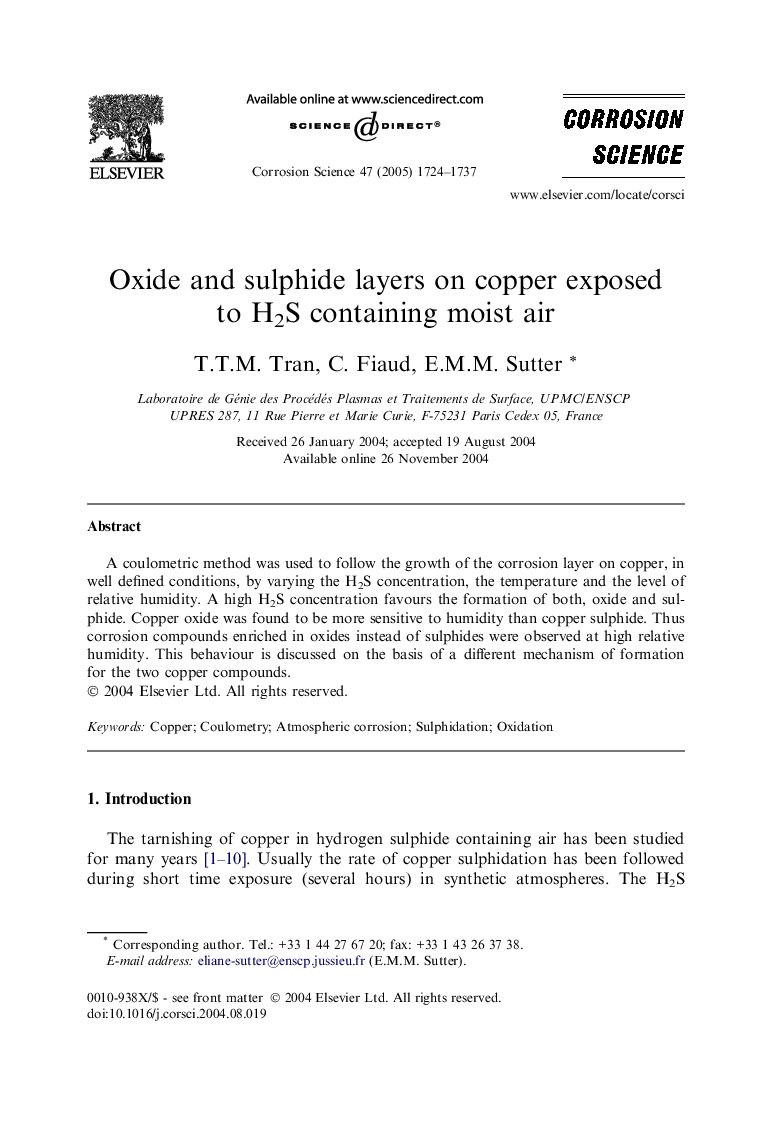| Article ID | Journal | Published Year | Pages | File Type |
|---|---|---|---|---|
| 10628651 | Corrosion Science | 2005 | 14 Pages |
Abstract
A coulometric method was used to follow the growth of the corrosion layer on copper, in well defined conditions, by varying the H2S concentration, the temperature and the level of relative humidity. A high H2S concentration favours the formation of both, oxide and sulphide. Copper oxide was found to be more sensitive to humidity than copper sulphide. Thus corrosion compounds enriched in oxides instead of sulphides were observed at high relative humidity. This behaviour is discussed on the basis of a different mechanism of formation for the two copper compounds.
Related Topics
Physical Sciences and Engineering
Materials Science
Ceramics and Composites
Authors
T.T.M. Tran, C. Fiaud, E.M.M. Sutter,
